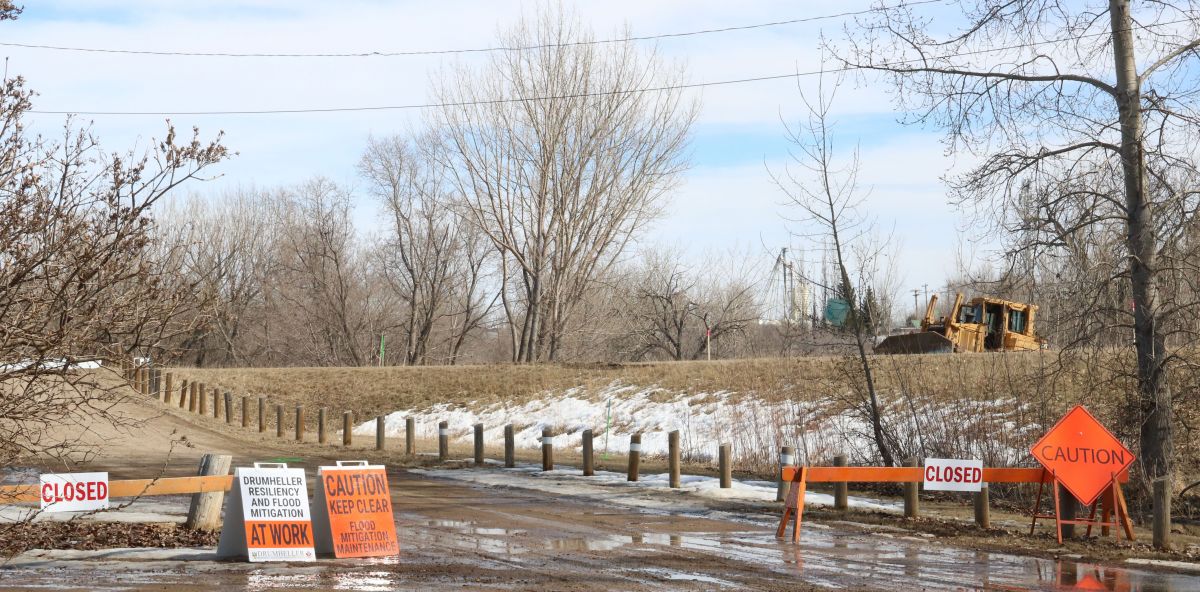
Preparing for the next big flood event evokes thoughts of constructing man-made berms and dikes, but trees can also play a vital role in flood mitigation.
The Town of Drumheller is utilizing natural resources along Drumheller’s waterways, including the Red Deer River, in its flood mitigation and climate adaptation efforts.
Chief resiliency and flood mitigation officer, Darwin Durnie said, “We find the plains immediately adjacent to the river (both upstream and downstream of Drumheller) are barren except for a ribbon of what we call riparian area that’s well-treed with poplars.”
These riparian areas found along rivers are important because of the role the vegetation plays in soil conservation and habitat biodiversity. Vegetation in this area can provide a natural filtration system for waterways, and can impact flood events by slowing the flow of water and reducing soil erosion and flood damage.
One area Drumheller residents can already see this impact is at Newcastle Beach.
The willows along this section slow the flow of the river, leading to higher deposits of silt and gravel on the inside bend, while increasing erosion on the outside bend near the hospital. Removing these trees will “improve channel capacity to slow down erosion,” according to Durnie.
Grubbing, or the clearing and removal of trees, will also be focused between the Hoodoos and Cambria to help establish new berms, and in the area between the Gordon-Taylor Bridge, Badlands Community Facility, and Centennial Park. Dangerous trees which may impact future dike enhancements will be removed, or culled, from this area. Early work in the area was halted due to shutdowns from COVID-19 and Durnie is hopeful work will continue in August.
Culling trees is only one portion of the program, however.
Part of the flood mitigation efforts deals with climate adaptation. Trees play a vital role to slow or reverse pollution by removing carbon dioxide from the atmosphere.
While operations at coal mines in the valley stopped in 1979, there is still plenty of the fossil fuel remaining which, according to Durnie, may impact changes in climate.
One of the struggles of climate adaptation, Durnie said is trying to “predict what the climate is going to be in the future.” Temperatures will go one of two directions, either increasing or decreasing, and there is a probability of more intense rainstorms.
Durnie added, “On the climate adaptation front, we need to be able to look at how much cooling effect can we get by having trees throughout the area to help cool it down and make it a more comfortable place to live, but also maybe slow down some of the storms that come into the area.”
Two students, from the University of Calgary’s Faculty of Geomatics and the Geographical Information System (GIS) program at Southern Alberta Institute of Technology, were recently involved with the project. The students took inventory of trees along the Red Deer River to assess their health and how they play a part in both flood mitigation and climate adaptation.
“We’ve gone out and looked at (trees in public areas), documented type and location, and with that we can make maps that show what the cooling effect might be of that grouping of trees,” said Durnie. He added, “Most of the trees we see throughout (Drumheller) and other neighbourhoods were planted and introduced.”
The flood mitigation office is working closely with Drumheller Institution in regards to the town-owned tree farm managed near their facility. The inventory students took will help ensure the tree farm has “enough inventory over the next 40 to 50 years” to replace trees in public areas to benefit the climate of the valley.
“The tree farm will be the backbone of the tree improvement program,” Durnie said. He added it will play an instrumental role in replacing trees the office has to remove, although some trees will be imported from nurseries due to the current capacity of the tree farm.
Durnie told the Mail, “(The public will) see some activity this fall of us moving some trees.”